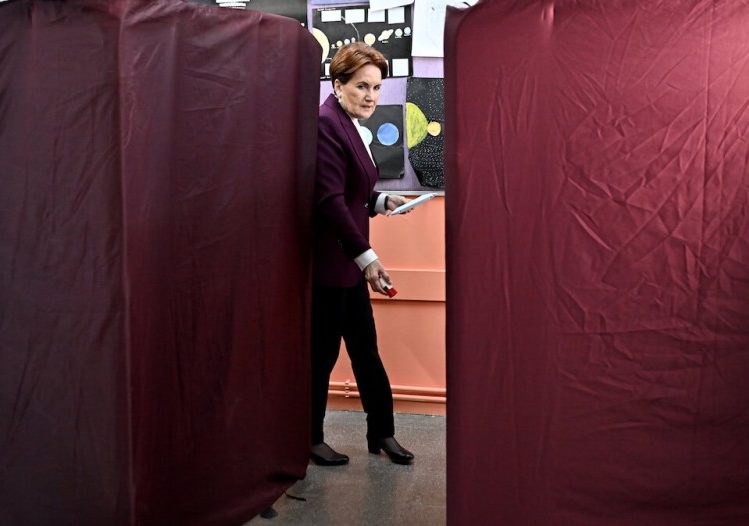S
ince 2020, energy markets have faced many serious challenges. First, the COVID-19 pandemic, then, rising demand accompanied by faster-than-expected normalization, and finally, the Russia-Ukraine war, which led to record low and high prices. All this was reflected both in energy-exporting and energy-importing countries. If we add to this the discussions about increasing global warming and the need for urgent action, one question comes to the fore: should energy investments be focused on renewables or hydrocarbons?
Renewables to reduce import dependence
In the 2000s, investment in renewable energy resources began to increase with the aim of reducing dependence on imported energy supplies. As concerns about energy dependence were combined with fears about climate change, investment trends in solar and wind projects accelerated. In 2004, investments, mainly in developed countries, focused on wind energy and were just over $50 billion; by 2021, renewable energy investments accounted for about 70% of global electricity energy investments.
Over this period, several oil and gas companies have been under pressure to shift their investments to renewables or to invest in projects that reduce greenhouse gas emissions from their operations. However, by 2020, only 1% of these companies’ investments were in clean energy.
In 2022, the global energy crisis, exacerbated by the war in Ukraine, led to the largest increase in renewable energy investment after 2020. It is important to note that China and the EU commissioned a large share of the newly installed renewable energy capacity, which increased by around 50 GW globally. In fact, China has been the world’s largest single investor in renewable energy for more than a decade.
China has become a leader in solar and wind power, not only by investing in power generation, but also by allocating significant resources to their technologies. China is also building the world’s largest battery factories across the globe to meet the demand for electric vehicles and energy storage. Although the current demand for Chinese electric vehicles is almost half of the capacity being built, China clearly has ambitions to create a long-term monopoly on battery technology.
The EU is one of the regions with the highest return on investment in renewable resources. For the first time in 2022, the 27 European Union countries produced more electricity from wind and solar power plants alone than from natural gas-fired thermal power plants. More importantly, the electricity produced from both sources exceeded the amount of electricity produced from coal in the same year. When other non-fossil energy sources such as hydro and nuclear are added to wind and solar, the share is around 55%—also a historic level for the EU.
Investment continues as demand for fossil fuels recovers
The fact that investment in renewables and the amount of electricity generated are increasing does not mean that demand for fossil fuels is decreasing. Although the impact of the pandemic on economies is still being felt, oil demand is approaching pre-Cold War levels of 100 million barrels per day. This clearly shows that even if investment in renewable energy sources increases, the demand for oil will continue. Even in a country like Norway, which generates more than 90% of its electricity from renewables and has rapidly increased the number of electric vehicles, oil demand remains stable.
The International Energy Agency (IEA) estimates that if the rate of increase in renewable energy investment continues and capacity additions are roughly tripled, oil demand will peak in 2028 and begin to decline from that point. It should be noted, however, that the institution’s forecasts are often criticized and do not always reflect the truth. For example, the U.S., the world’s largest oil producer, continues to increase its oil production despite President Biden’s promises to reduce hydrocarbon production and increase climate targets, and this increase is expected to continue until 2050.
In addition to oil, demand for natural gas and coal is expected to continue rising for some time. China, the world’s largest energy consumer, is also increasing its investment in coal and gas, alongside its record investment in renewable energy. Coal-fired power plants under construction in the country are six times larger in capacity than coal-fired power projects in the rest of the world, and coal is projected to account for more than 55% of China’s electricity generation by 2025.
Recommended
Natural gas, on the other hand, is emerging as the most important fuel in the transition to low-carbon energy systems. This is the result primarily of the fact that the seasonal effect of renewables has not yet been eliminated. Electricity storage technologies appear to be changing the unsustainable nature of renewable energy generation by making it more sustainable. Chinese investment in battery technologies, for example, has not backed up renewable power plants.
As a result, many of the largest hydrocarbon companies, such as Shell and Total, have decided to continue their investments in natural gas. Some of these companies, which withdrew from Iran and Russia after the sanctions, have already shifted some of their operations to the U.S. The expectation that LNG demand will continue to grow is supported by investments in regasification terminals and Floating Storage Regasification Units by European countries, such as Germany, and emerging Asian countries.
More hydrocarbon investment still welcome
Ironically, the EU countries that decided to move away from long-term contracts are now pursuing long-term agreements with the leading LNG exporters, such as the U.S. and Qatar, to secure their LNG needs. However, most liquefied natural gas exporters have already exceeded their contractual limits thanks to Asian buyers. Europe took advantage of milder-than-expected weather conditions in the 2022-2023 winter season when the Kremlin cut off the flow of gas, but this will not always be the case and reliable suppliers are needed.
Given that oil prices are being deliberately pushed up these days by OPEC+ limiting supply, rising gas prices also affect the amount of electricity generated from gas or the manufacturing capacity of many industries. Companies in gas-intensive sectors such as iron, steel, chemicals, or fertilizers have been forced to reduce their production capacity or shut down as a result of rising prices. Weak supply has already forced the European majors to de-industrialize.
In an environment where it is still not possible to switch to 100% renewables, even in the electricity sector alone, weak investment in fossil fuels will trigger a new global supply crisis. Continued investment in oil and gas will be needed for some time to avoid a new energy crisis.





